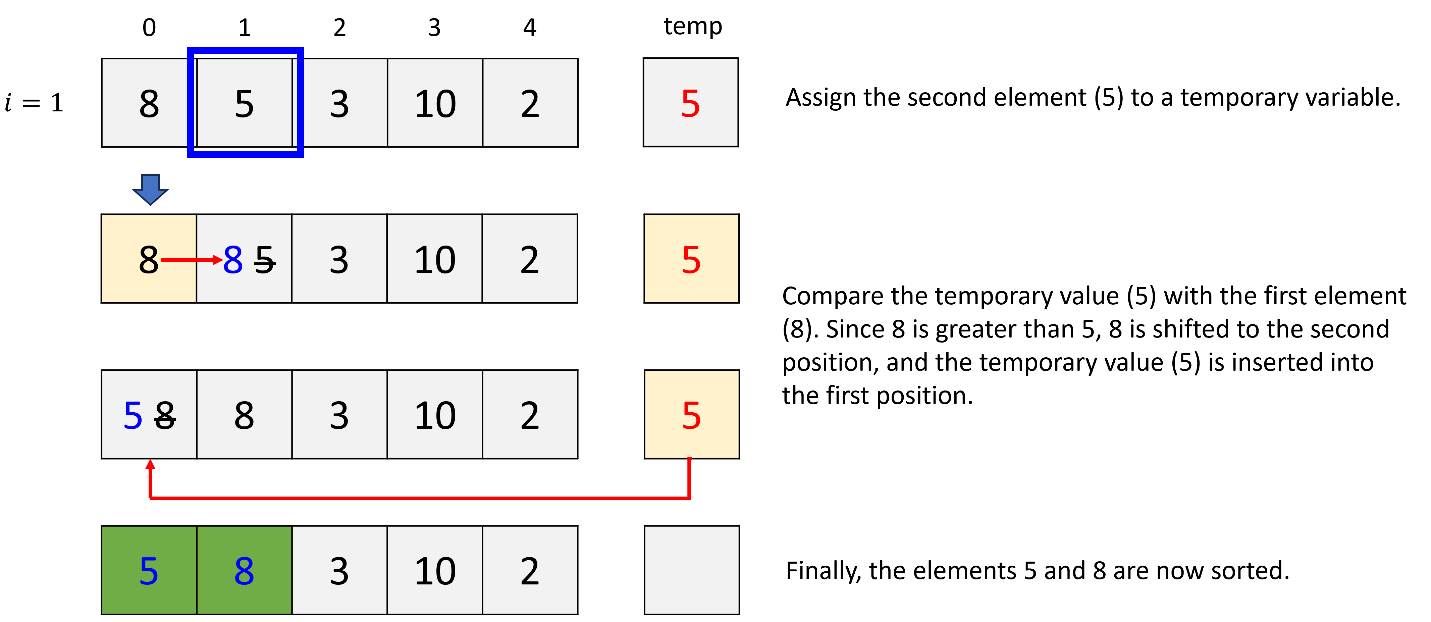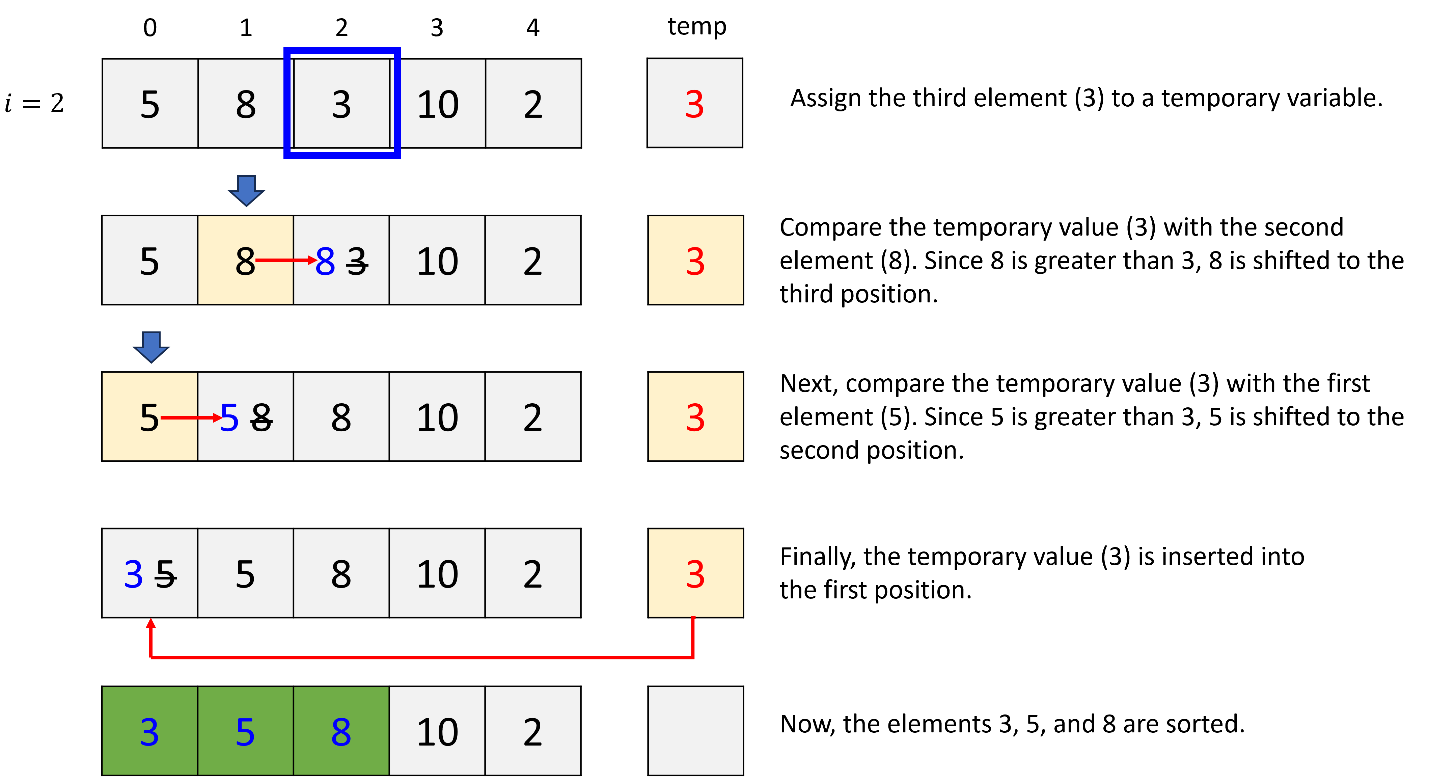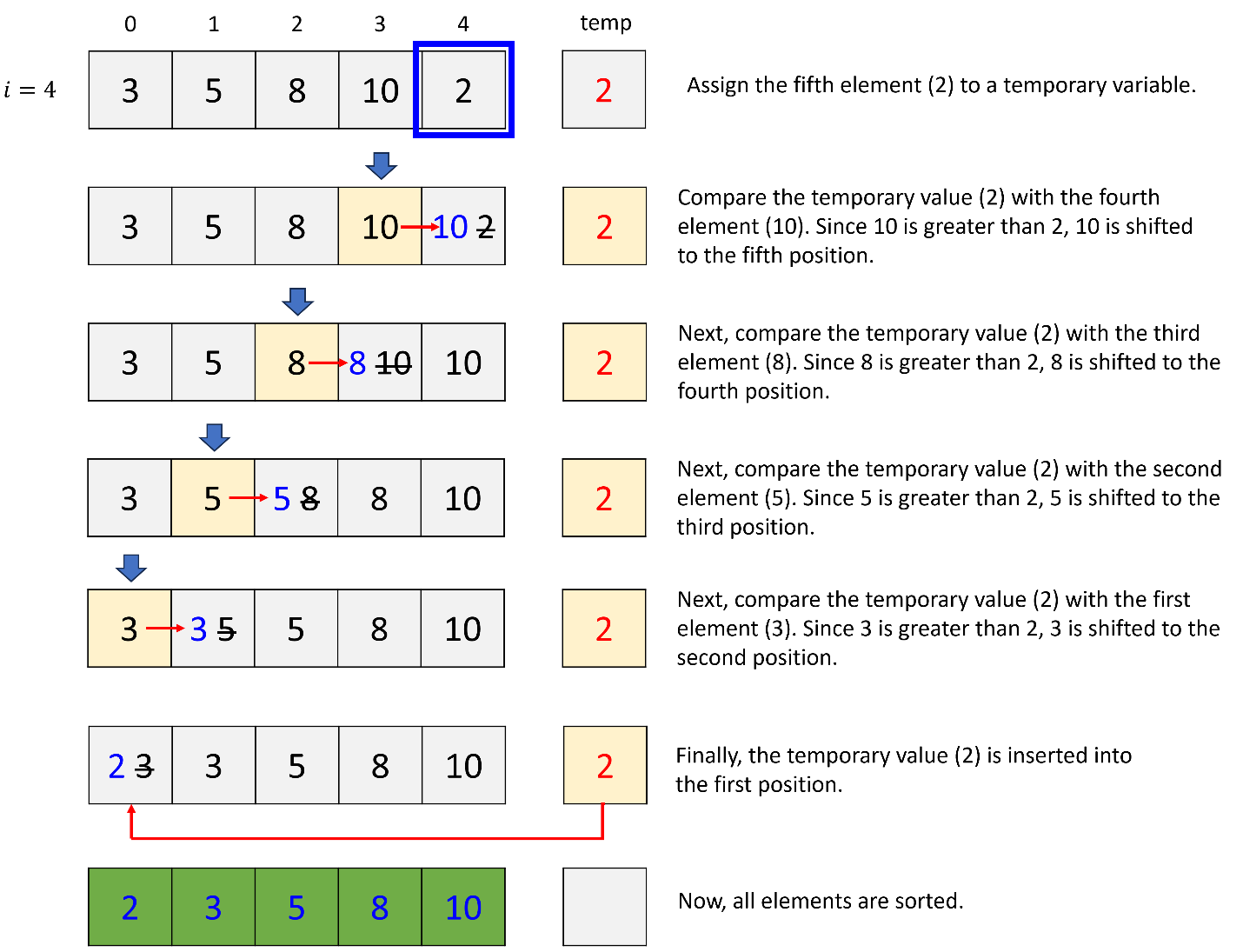The insertion sort algorithm organizes a list of values by iteratively inserting a new element into a pre-existing sorted sub-list until the entire list is sorted.
1. How it works?
Let's say we have a list of elements, and we're attempting to sort the elements in ascending order.

In insertion sort, two indices are utilized: one (i) for the iteration and the other (j) for comparing a new element with a pre-sorted element.
a. 1st iteration (i = 1)

b. 2nd iteration (i = 2)

c. 3rd iteration (i = 3)

d. 4th iteration (i = 4)

2. Insertion Sort Implementation
Output:
| [2, 3, 5, 8, 10] |
3. Time Complexity
In the worst-case scenario, where the list is initially in ascending order and requires sorting into descending order, the number of comparisons varies across each iteration. For the first iteration (i = 1), only 1 comparison is necessary, for the second iteration (i = 2), comparisons are needed, and so on until the (n - 1)th iteration. Summing these comparisons yields
![]()
Thus, the complexity of the selection sort algorithm in this scenario is O(n2).
Conversely, in the best-case scenario, where the list is already sorted in ascending order and requires sorting into ascending order again, only one comparison is needed per iteration. Hence, there are only n - 1 comparisons in total. Thus, the complexity of the selection sort algorithm in the best-case scenario is O(n).